Photos: How climate change is unearthing new histories
Published on Sep 23, 2022 07:53 PM IST
- Dino footprints exposed in a drying riverbed, sunken cities, once-submerged idols. See how a warming Earth is impacting ancient sites around the world.
1 / 8
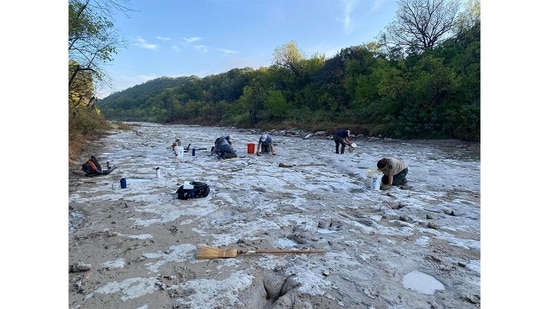
Published on Sep 23, 2022 07:53 PM IST
In Texas, USA, a mega-drought has revealed 113 million-year-old footprints of an acrocanthosaurus in the dried-up riverbed of the Paluxy River. The massive footprints, ironically situated within the Dinosaur Valley State Park, have not been seen since 2000.(Image Courtesy: Paul Baker)
2 / 8
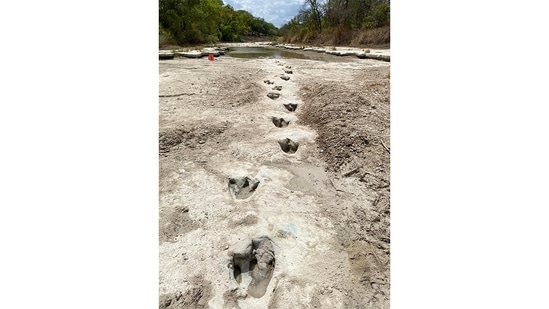
Published on Sep 23, 2022 07:53 PM IST
The trail is most likely the work of a single acrocanthosaurus, most likely 15 ft tall, weighing seven tonnes, archaeologists say. The two-legged, three-toed apex predator lived in the Early Cretaceous period, about 50 million years before its more famous cousin, the tyrannosaurus rex.(Image Courtesy: Paul Baker)
3 / 8

Published on Sep 23, 2022 07:53 PM IST
China is experiencing its most extreme heatwave in six decades. Rainfall along the basin of the Yangtze, the world’s third-largest river, has been 45% lower than usual. Lower parts of the basin are now in full view.(Thomas Peter/REUTERS)
4 / 8
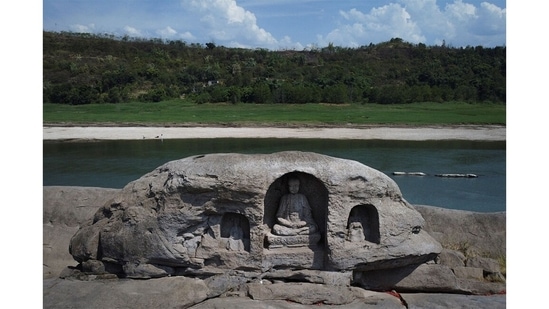
Published on Sep 23, 2022 07:53 PM IST
At the Foyeliang island reef, three 600-year-old Buddhist statues, carved into a boulder, are now visible. They date to the Ming and Qing dynasties. The largest is about 1 metre high and depicts a monk sitting on a lotus pedestal, flanked by two junior monks, presumably blessing boats as they pass by.(Thomas Peter/REUTERS)
5 / 8
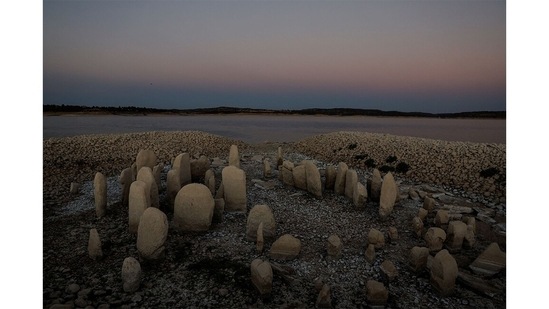
Published on Sep 23, 2022 07:53 PM IST
As droughts drop Spain’s Valdecañas reservoir to less than 30% of its capacity, an ancient funerary mound is now visible. Some 144 megalithic stones from 5000 BCE, arranged like a sort of Stonehenge, are being studied at close range.(Susana Vera/REUTERS)
6 / 8
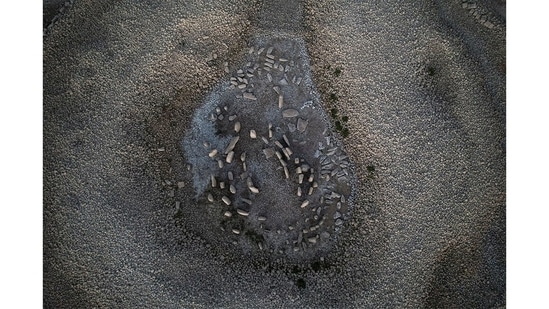
Published on Sep 23, 2022 07:53 PM IST
The 6-foot-high stones are arranged in concentric circles. The site was discovered in 1926 but has been submerged since the 1960s, after the area was flooded in a development project. Since the water is erasing some of the carvings on the stones, there is talk of moving the arrangement out of the reservoir.(Susana Vera/REUTERS)
7 / 8
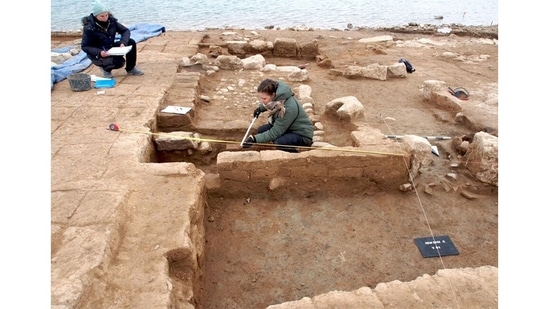
Published on Sep 23, 2022 07:53 PM IST
In southern Iraq, as water was diverted from the Mosul reservoir to drought-stricken regions, the ruins of a 3,400-year-old city emerged as the water receded. The settlement is thought to be Zakhiku, a key city in the Mittani Empire (c. 1550 to 1350 BCE). Researchers uncovered the remains of walls, a massive fortification, multi-storey warehouses, ruins of a palace.(Image Courtesy: Universities of Freiburg and Tübingen, KAO )
8 / 8
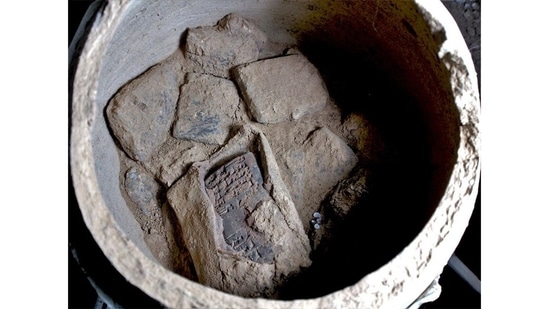
Published on Sep 23, 2022 07:53 PM IST





